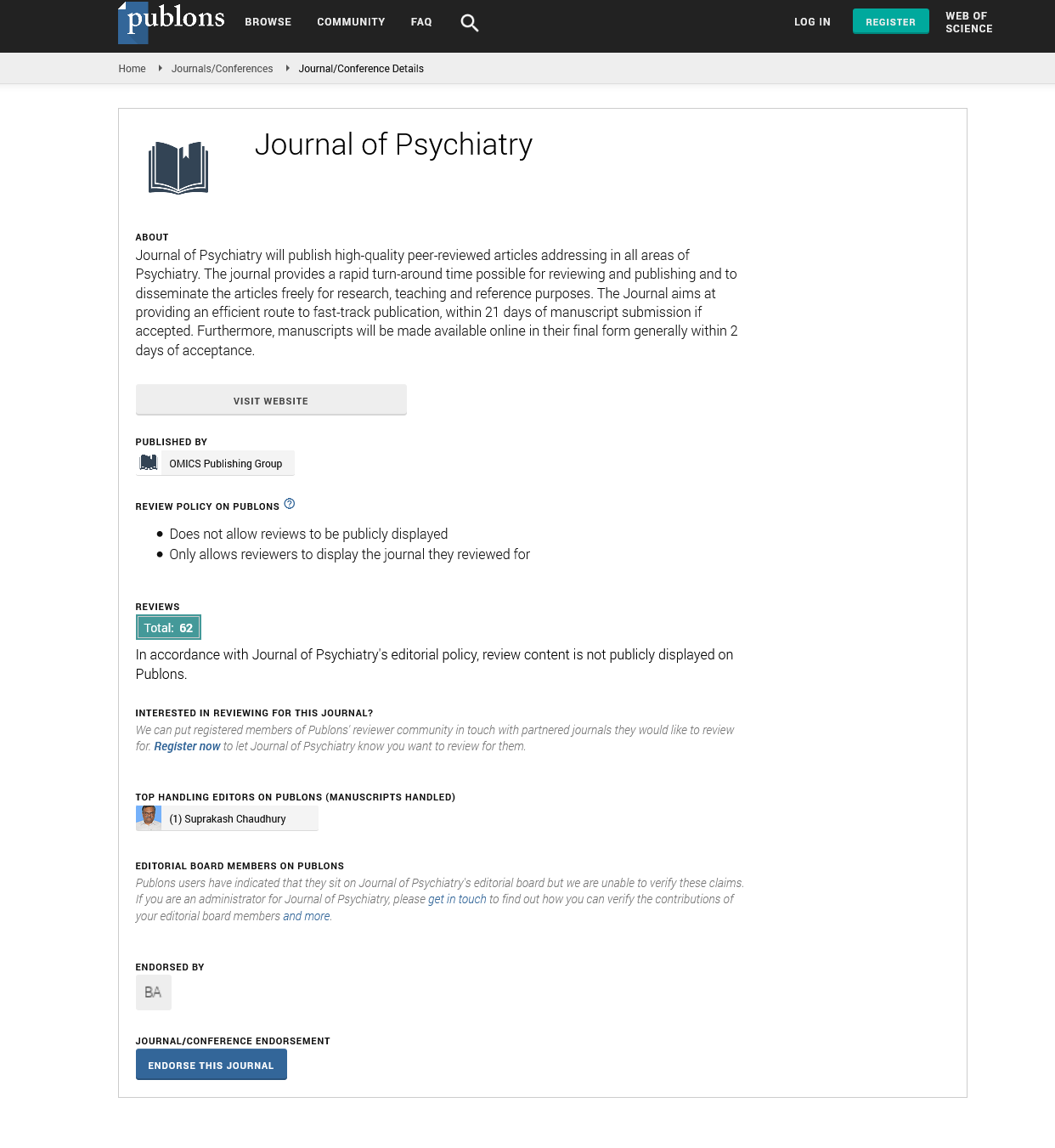Indexed In
- RefSeek
- Hamdard University
- EBSCO A-Z
- OCLC- WorldCat
- SWB online catalog
- Publons
- International committee of medical journals editors (ICMJE)
- Geneva Foundation for Medical Education and Research
Useful Links
Share This Page
Open Access Journals
- Agri and Aquaculture
- Biochemistry
- Bioinformatics & Systems Biology
- Business & Management
- Chemistry
- Clinical Sciences
- Engineering
- Food & Nutrition
- General Science
- Genetics & Molecular Biology
- Immunology & Microbiology
- Medical Sciences
- Neuroscience & Psychology
- Nursing & Health Care
- Pharmaceutical Sciences
Abstract
Hyperkinetic Movement Disorders Induced by Mirtazapine: Unusual Case Report and Clinical Analysis of Reported Cases
Won Tae Yoon*
Background: Hyperkinetic movement disorders caused by mirtazapine are very rarely reported, and involuntary severe cervical and truncal dystonia as an initial manifestation of mirtazapine-induced hyperkinetic movement disorder have not yet been reported. This study aimed to report an unusual case and to investigate the clinical pattern of mirtazapine-induced hyperkinetic movement disorder.
Methods: We present a patient with involuntary severe cervical and truncal dystonia as an initial manifestation of mirtazapine-induced hyperkinetic movement disorders. Additionally, we review previously reported cases and analyse the clinical pattern of mirtazapine-induced hyperkinetic movement disorders.
Results: Among 12 cases including our case, the main features of hyperkinetic movement symptoms induced by mirtazapine are akathisia (n=5, 42%) and dystonia (n=4, 33%). The other movement symptoms were dyskinesia (n=2, 17%) and periodic limb movement disorder (PLMD)-like nocturnal movements (n=1, 8%). Major associated conditions were older patients with depression or previous medication history of multiple neuropsychiatric drugs.
Conclusion: The results of this clinically investigative study may provide support for the diagnosis of mirtazapine-induced hyperkinetic movement disorders. In addition, if there are hyperkinetic movement symptoms in older depressive patients taking psychiatric medications, including mirtazapine, a diagnosis of drug-induced hyperkinetic movement disorder caused by mirtazapine should be considered, and cessation of mirtazapine should be implemented as the best treatment of choice.

